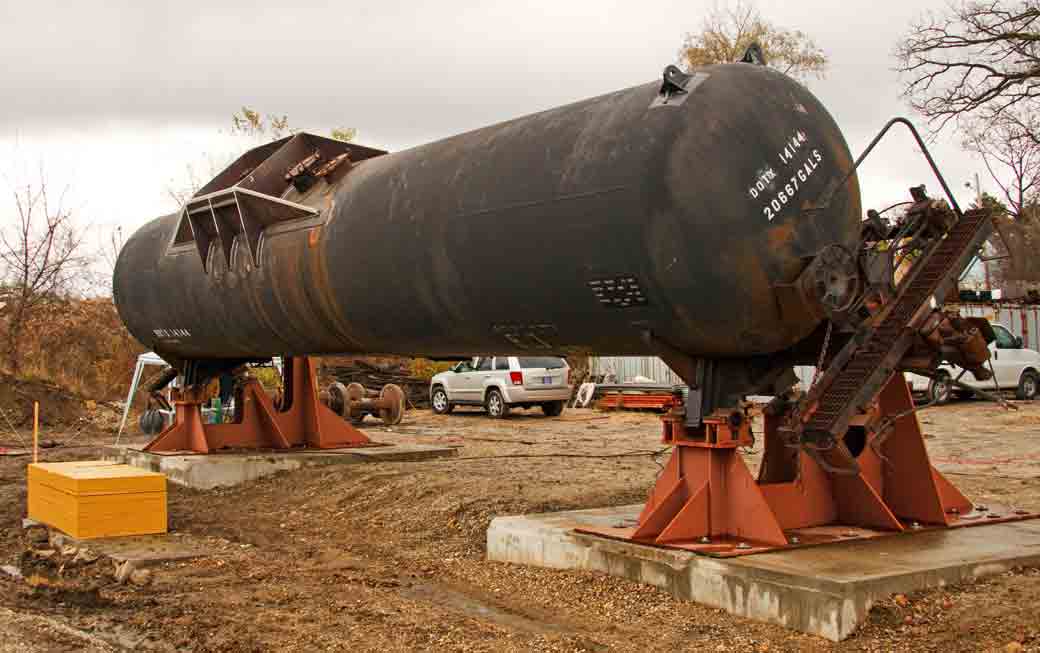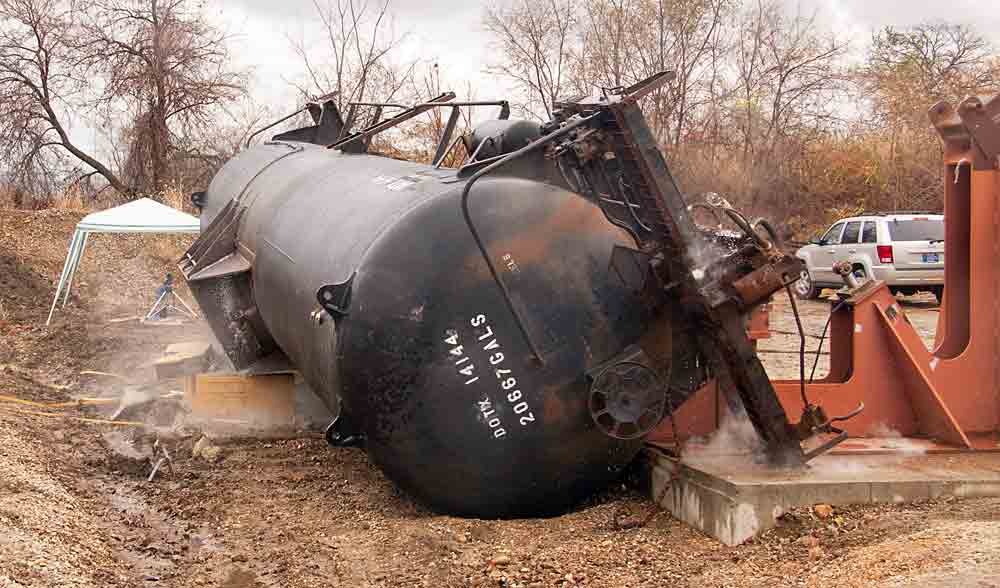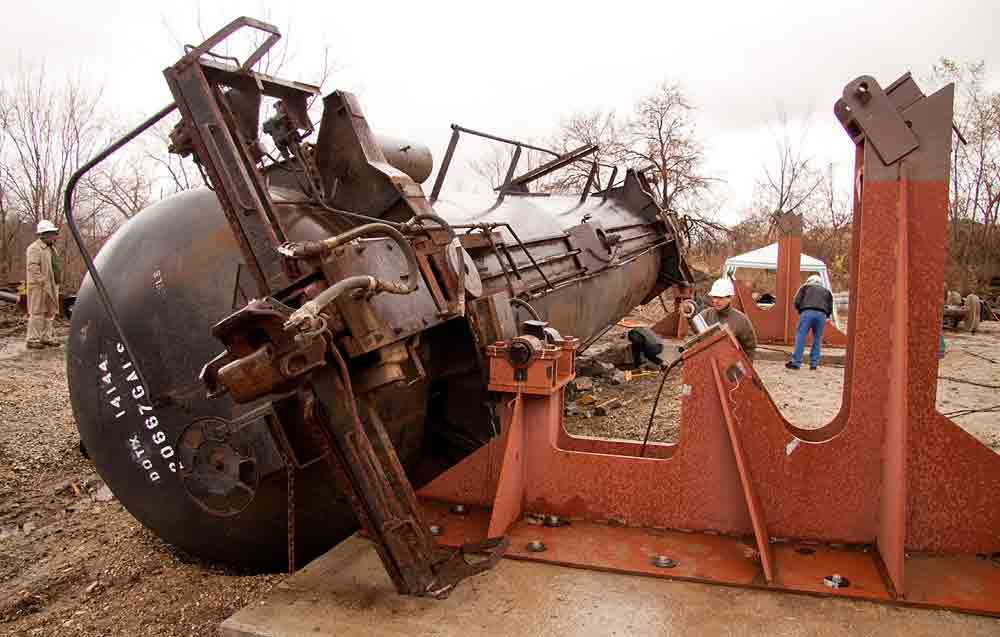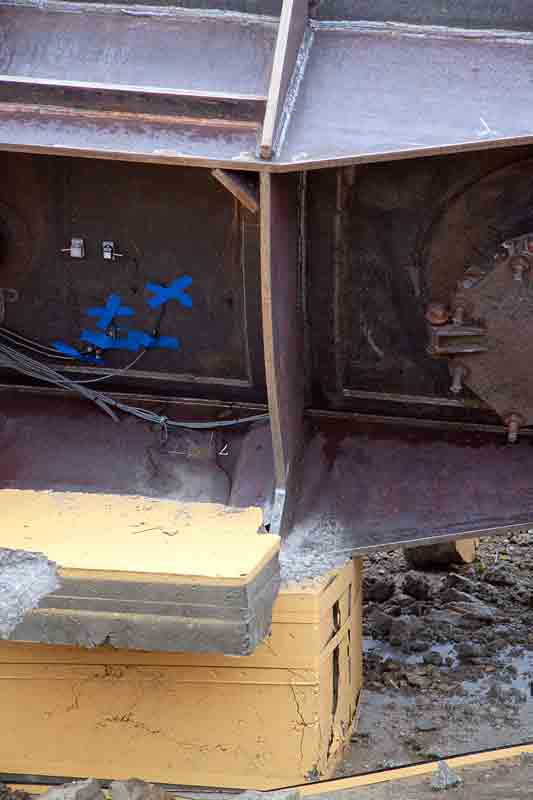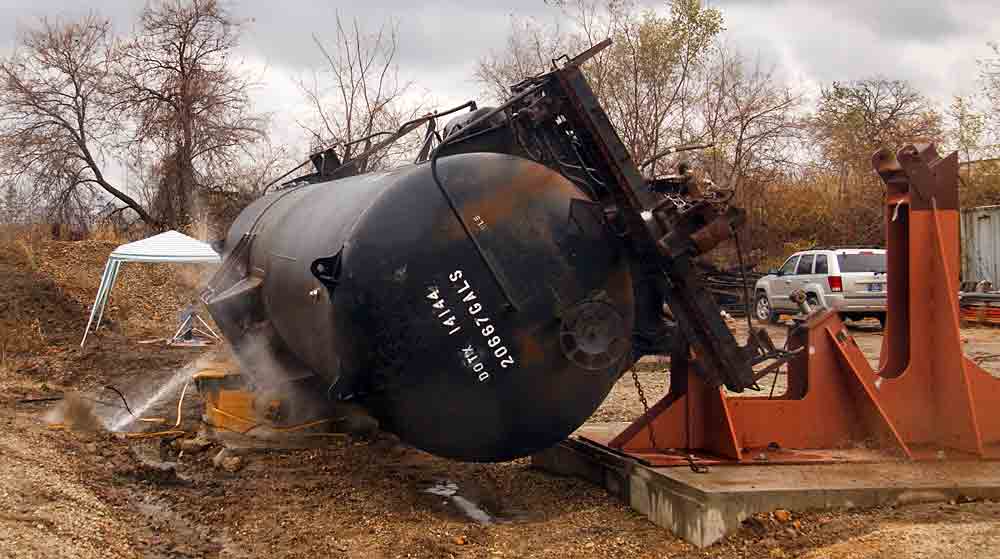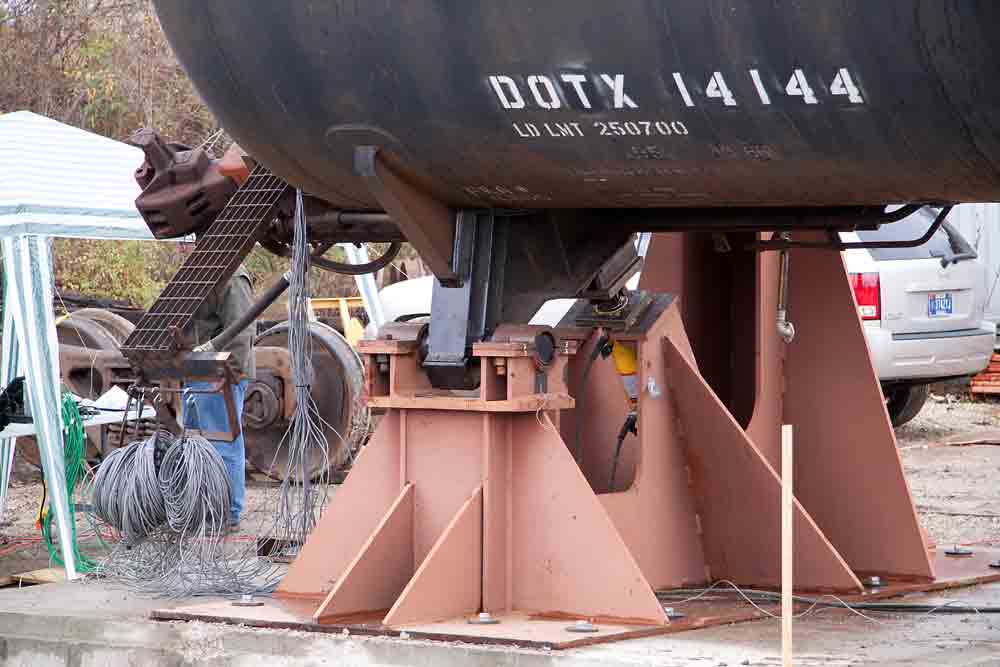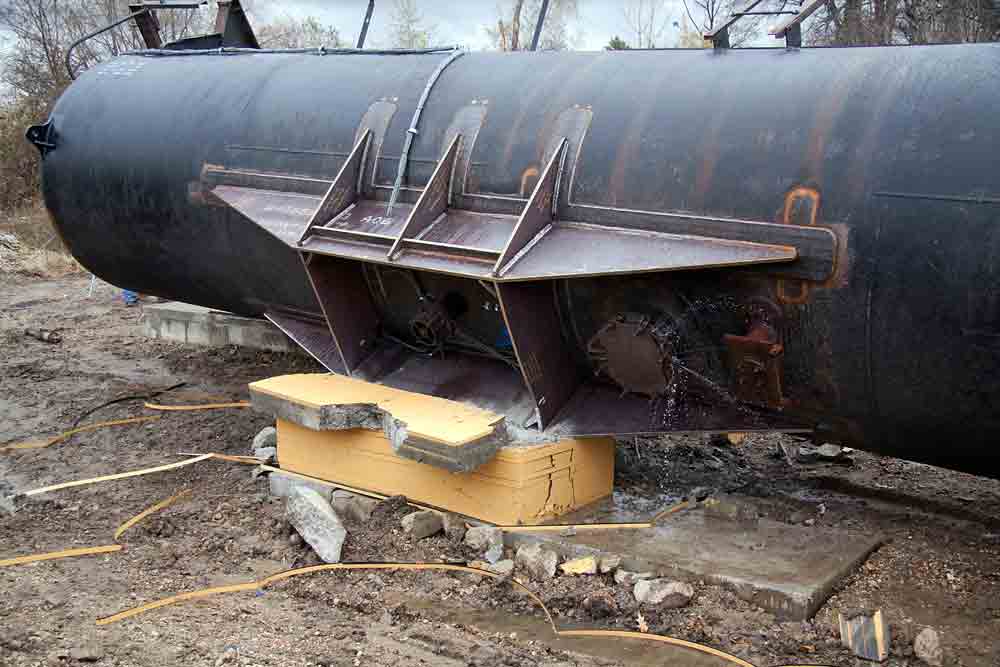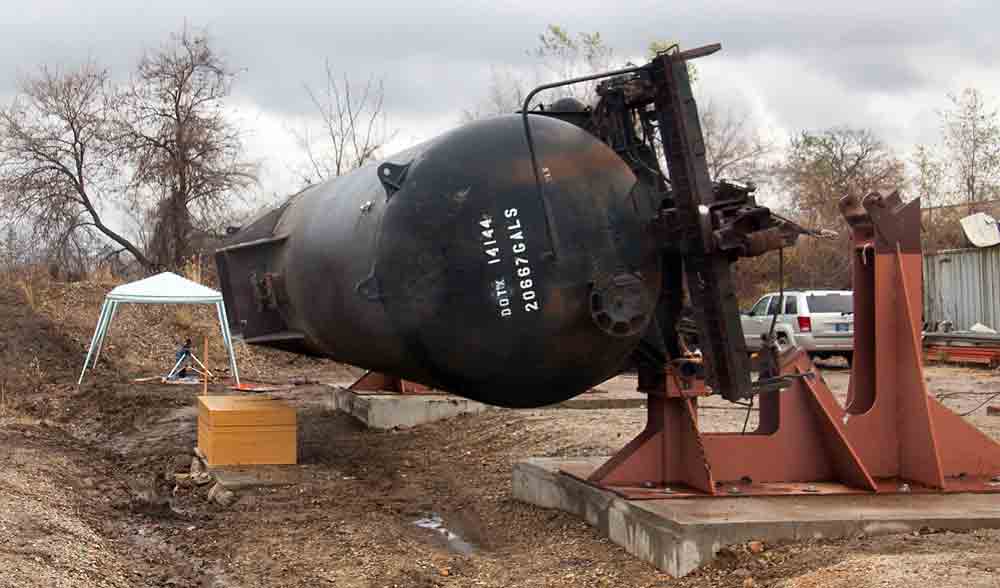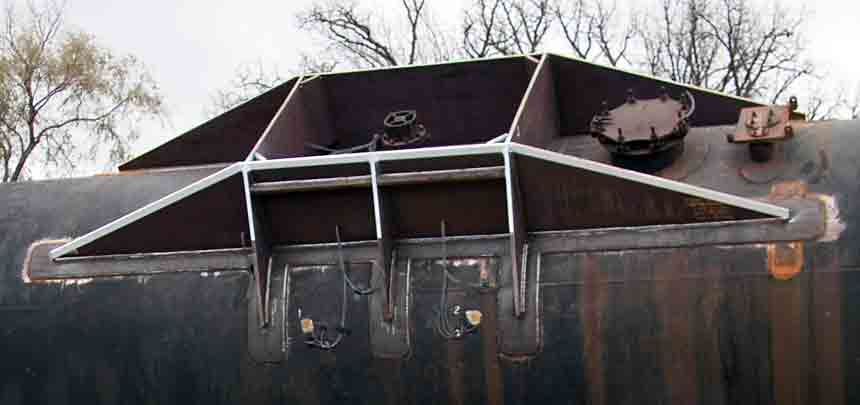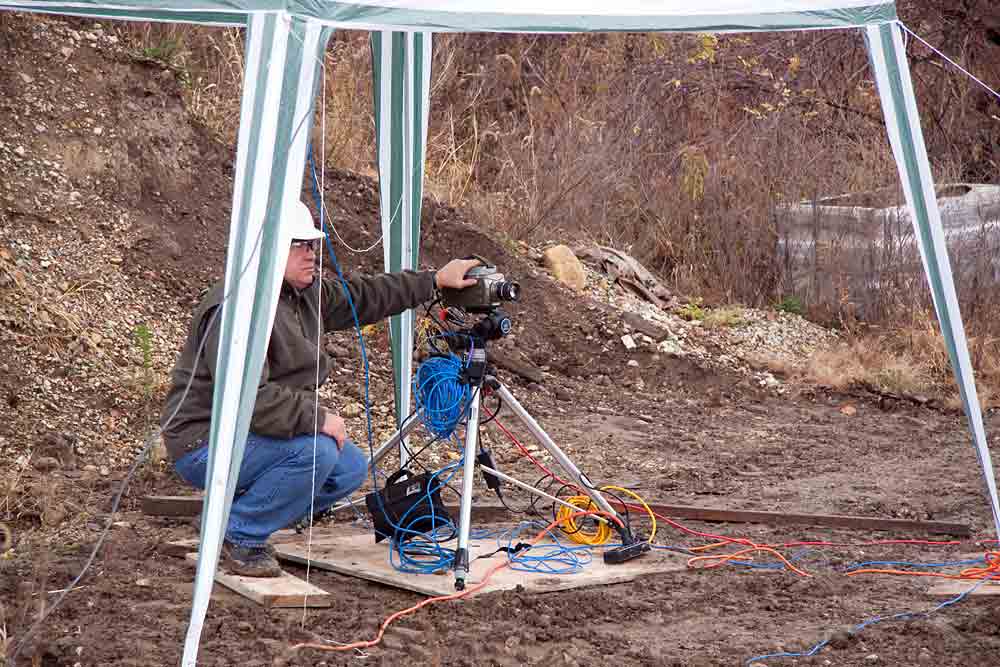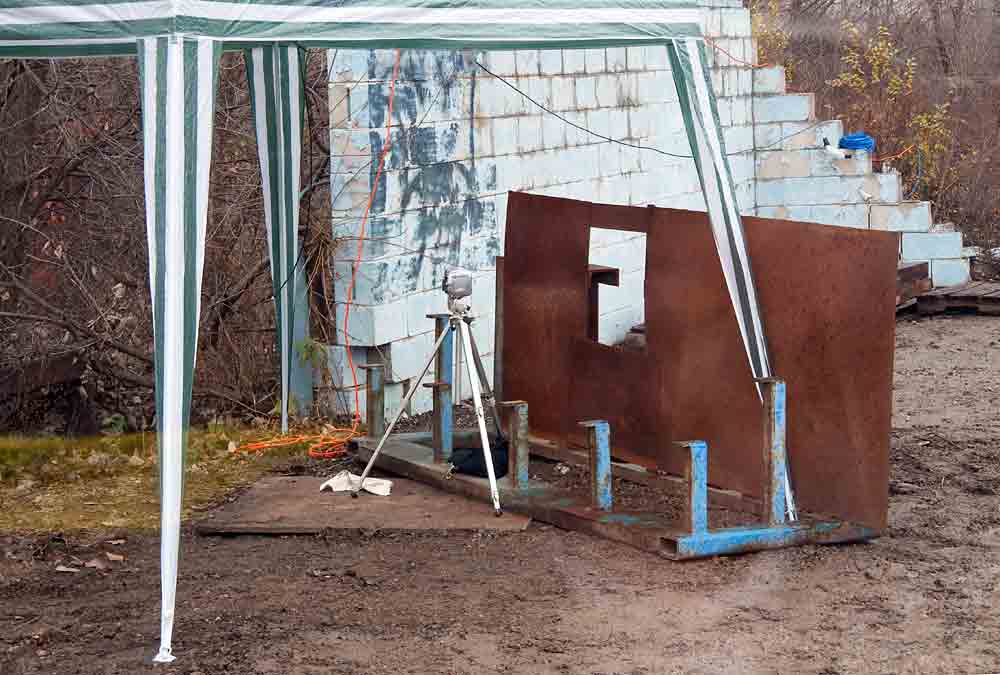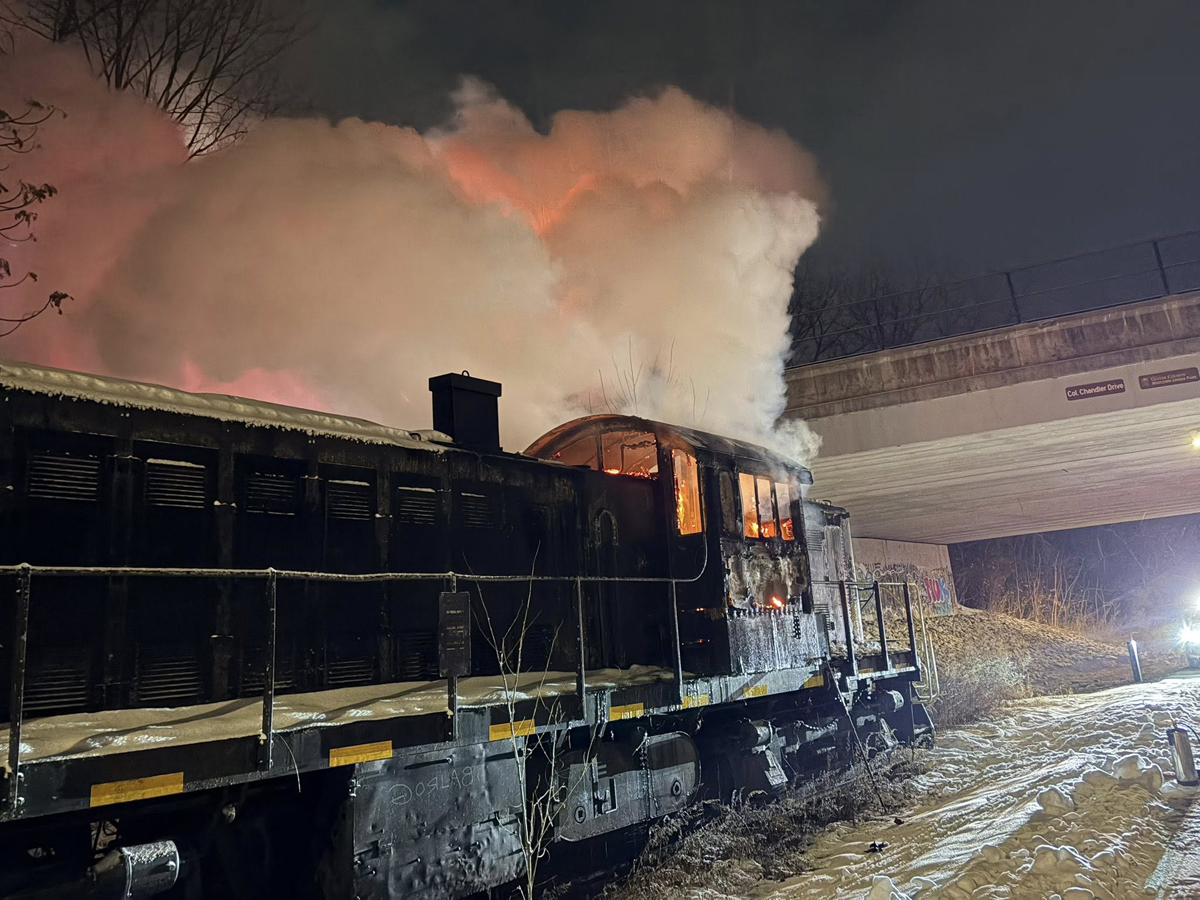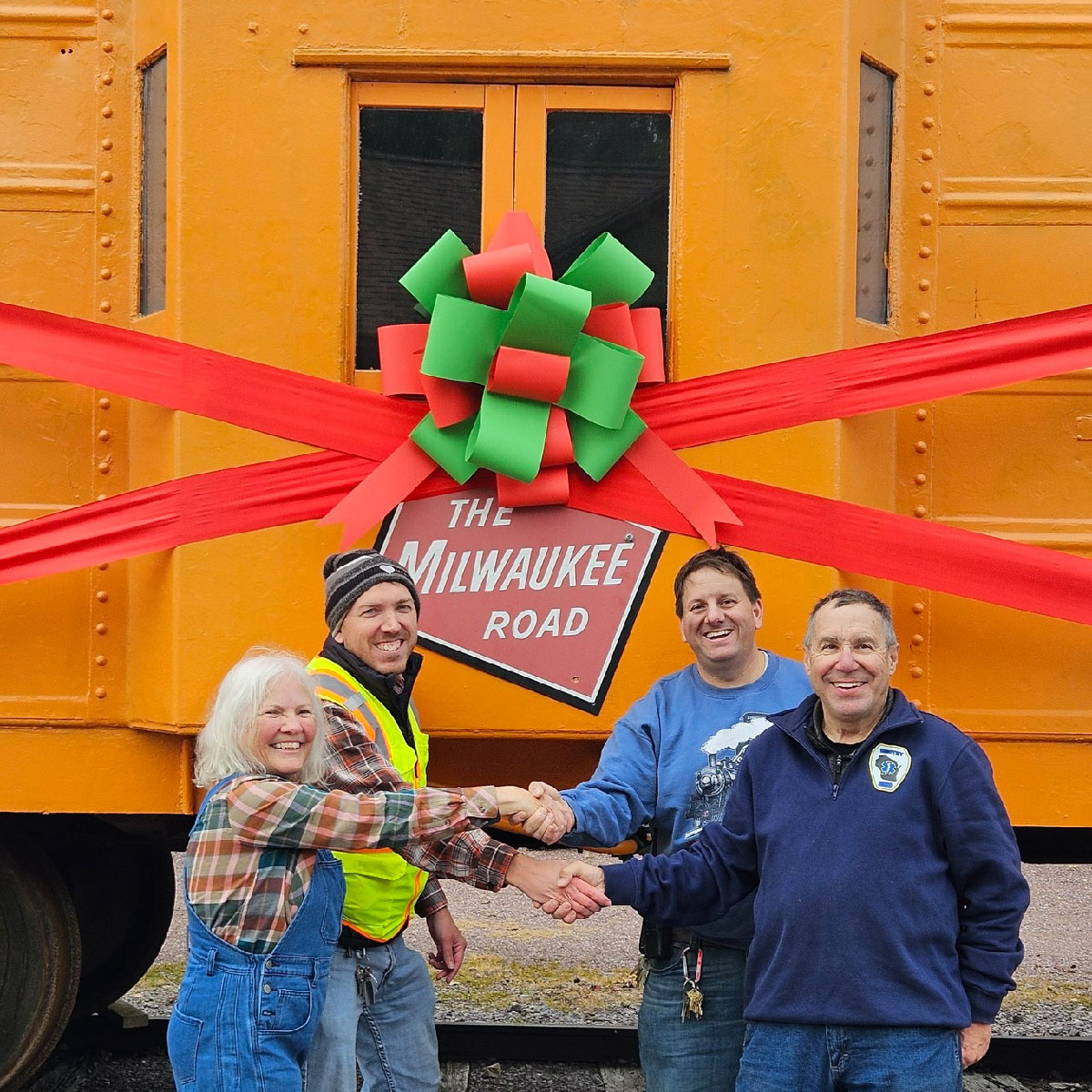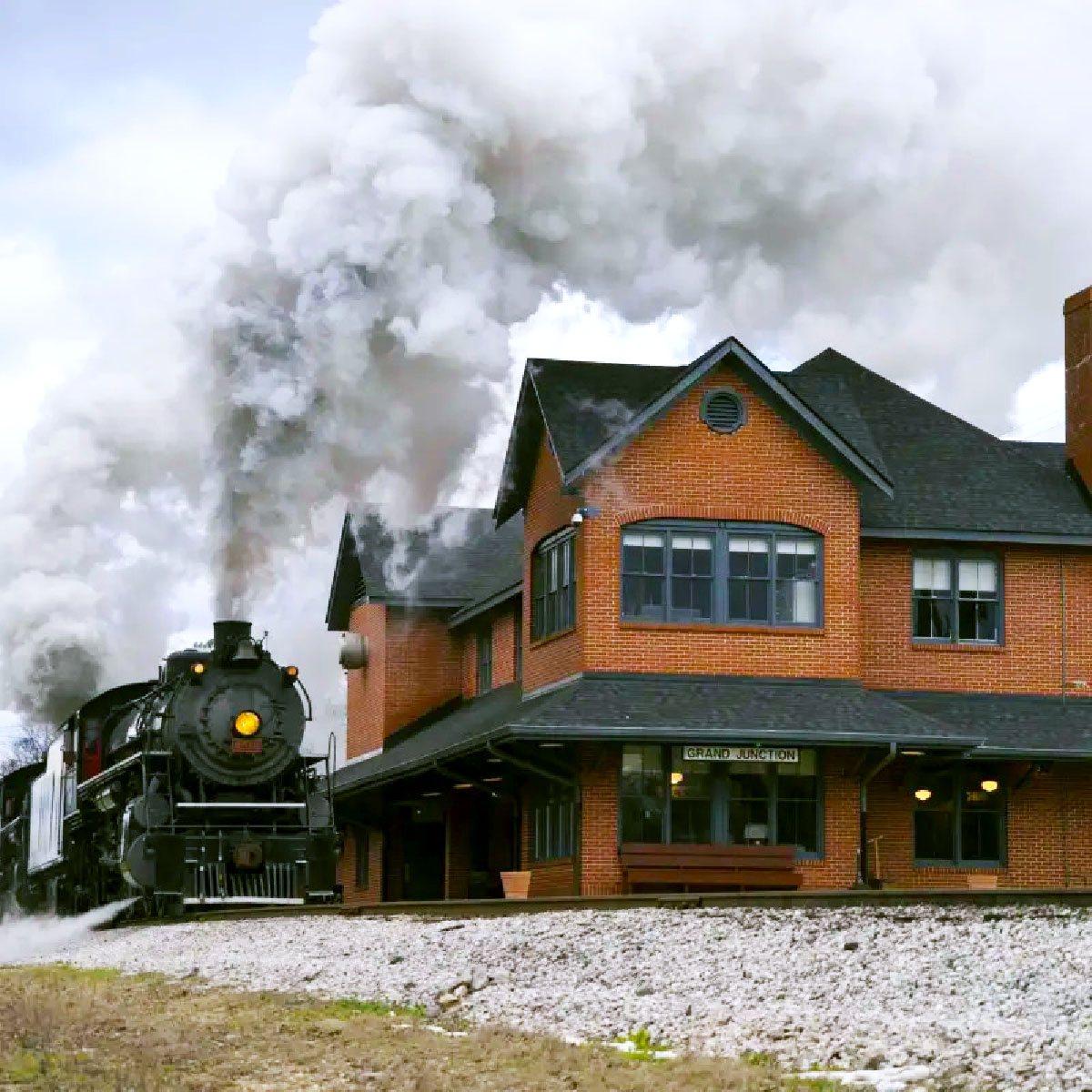In November, FRA and Countryside, Ill.-based engineering firm Sharma & Associates Inc. hosted a full-scale test at Joliet-based Railway Industrial Services Inc. In general, researchers wanted to see if “skid protection,” that is, a steel bracing welded around a tank car’s top fittings, would protect the fittings in case of a rollover. The test confirmed researchers models and expectations.
The photos (right) show how it all happened.
Although researchers are far from saying, “Here’s this wonderful solution, please incorporate it into your new cars,” they are optimistic this is a viable option worthy of additional research. On the plus side, the skid was not difficult or overly expensive to manufacture and could be retrofitted to existing cars. However, this particular design would likely interfere with personnel or equipment working with the tank cars, as well as filling or emptying them. Additional modeling then testing will seek to address this issue.
In the meantime, researchers have many more options they’re examining in their efforts to make tank cars and hazmat transportation safer. – Kathi Kube





